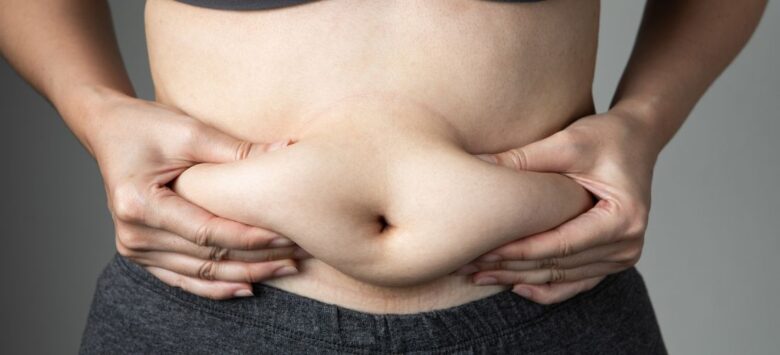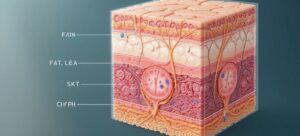When it comes to skin appearance and body composition, “cellulite” and “fat” are often used interchangeably. However, they are not the same thing. While both are related to the body’s fat storage, cellulite is a specific phenomenon that affects the skin’s texture. This article explores the differences between cellulite and fat, shedding light on their unique characteristics and how they interact.
What Is Fat?
Fat, also known as adipose tissue, is a vital component of the human body. It serves several critical functions:
- Energy Storage: Fat acts as the body’s primary energy reserve, storing excess calories for future use.
- Insulation and Protection: It helps regulate body temperature and cushions organs from impact.
- Hormonal Regulation: Fat cells release hormones that influence metabolism, appetite, and overall health.
Fat is distributed throughout the body in three main layers:
- Subcutaneous Fat: Located just beneath the skin, this is the most visible type of fat and is often associated with body shape.
- Visceral Fat: Found around internal organs, it’s less visible but more harmful to health in excess.
- Intramuscular Fat: Fat located within the muscles, often seen in athletes.
Characteristics of Fat
- Fat is smooth and evenly distributed under the skin.
- Its appearance doesn’t typically cause dimpling unless paired with structural changes in the skin or connective tissue.
- Everyone has fat, and its amount is influenced by factors like diet, genetics, and activity level.
What Is Cellulite?
Cellulite is a condition where fat deposits push against the skin’s connective tissue, creating a dimpled or lumpy appearance. It is most common in areas with higher fat storage, such as the thighs, hips, and buttocks.
Unlike general fat, cellulite is not evenly distributed due to the structural differences in connective tissue.
Key Features of Cellulite:
- Localized Appearance: Cellulite creates a dimpled or “orange peel” texture.
- Not Just About Fat: While fat plays a role, cellulite also involves the skin, connective tissue, and circulation.
- More Common in Women: Hormonal differences and variations in connective tissue structure make women more prone to cellulite than men.
How Are Cellulite and Fat Different?
1. Composition
- Fat: A type of tissue primarily made up of adipocytes (fat cells).
- Cellulite: A condition resulting from fat cells interacting with connective tissue under the skin.
2. Appearance
- Fat: Appears smooth under the skin unless excessive.
- Cellulite: Causes uneven, lumpy skin texture due to fibrous bands pulling the skin down.
3. Distribution
- Fat: Distributed based on genetics, hormones, and lifestyle.
- Cellulite: Appears predominantly in certain areas, even in lean individuals.
4. Causes
- Fat: Accumulation is caused by consuming more calories than the body burns, hormonal imbalances, or inactivity.
- Cellulite: Caused by a combination of fat, weakened connective tissue, reduced circulation, and genetic predisposition.
5. Health Implications
- Fat: Can lead to health risks when in excess, especially visceral fat, which is linked to heart disease and diabetes.
- Cellulite: A cosmetic concern without direct health risks.
Can You Have Cellulite Without Excess Fat?
Yes, even individuals with low body fat can have cellulite. This is because cellulite is not solely determined by fat levels but also by the skin’s structure, connective tissues, and circulation.
Can Reducing Fat Eliminate Cellulite?
Reducing overall body fat through diet and exercise may help minimize the appearance of cellulite, but it won’t eliminate it completely. Cellulite is influenced by multiple factors, including genetics and skin elasticity. Therefore, targeted treatments like massage, laser therapy, or skincare products are often needed for additional improvement.
Practical Tips for Managing Cellulite and Fat
Managing Fat:
- Healthy Diet: Focus on whole foods like fruits, vegetables, lean proteins, and healthy fats.
- Regular Exercise: Combine cardio and strength training to burn fat and build muscle.
- Sleep and Stress Management: Hormonal balance is essential for maintaining a healthy body fat percentage.
Managing Cellulite:
- Stay Active: Exercise improves muscle tone and circulation.
- Massage and Dry Brushing: Stimulates lymphatic drainage and temporarily reduces the appearance of cellulite.
- Skincare Products: Use creams containing caffeine or retinol for temporary skin tightening.
- Professional Treatments: Consider options like radiofrequency, laser therapy, or subcision for more pronounced results.
Conclusion
While fat and cellulite are interconnected, they are distinct in their structure and impact on the body. Fat is an essential component of the human body, while cellulite is a cosmetic concern caused by structural changes in the skin and connective tissue.
Understanding the differences between the two can help you set realistic expectations for managing them. Whether you’re addressing overall fat reduction or focusing on improving the appearance of cellulite, remember that self-care and self-acceptance are key.




